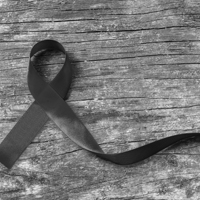Skin Cancer Awareness Month
May 7, 2018 May is Skin Cancer Awareness Month, which means now is the perfect time to learn more about better protecting our skin from harmful sunrays. According to the Skin Cancer Foundation (SKF), 1 in 5 Americans will be diagnosed with some kind of skin cancer by they reach the age of 70. Although many types of skin cancer are treatable if detected early, some – like melanoma – are both widespread and deadly.
May is Skin Cancer Awareness Month, which means now is the perfect time to learn more about better protecting our skin from harmful sunrays. According to the Skin Cancer Foundation (SKF), 1 in 5 Americans will be diagnosed with some kind of skin cancer by they reach the age of 70. Although many types of skin cancer are treatable if detected early, some – like melanoma – are both widespread and deadly.
Skin Cancer Facts
Skin cancer stems from an abnormal growth of skin cells, which often occurs on parts of the skin that are routinely exposed to sun. For this reason (and others), medical professionals typically refer to skin cancer as a “lifestyle-related” disease. People who experience lots of sun damage are more likely to develop skin cancer, so limiting exposure to ultraviolet radiation, using daily skin protection (sunscreen) year-round and keeping an eye out for known risk factors (e.g. common signs and symptoms) is crucial for early detection, diagnosis and treatment.
The most effective way to avoid developing skin cancer is to intentionally take steps to protect your skin from getting damaged. If parents and caregivers teach their kids how to protect their skin starting at a young age, their chances for avoiding skin cancer in the future will also be better.
The three most common types of skin cancer are:
- Basal cell carcinoma (the most common)
- Squamous cell carcinoma (the second most common), and:
- Melanoma
Even though anyone can get skin cancer, people with fair skin are at a higher risk than others are, says the American Academy of Dermatology (AAD). Basal cell carcinoma, squamous cell carcinoma and melanoma all present with different symptoms, which is why being on top of the warning signs is so essential.
Different Types of Skin Cancer – and Their Symptoms
Unsurprisingly, different kinds of skin cancer present in very different ways. Basal cell carcinoma (also known as BCC), the most common type of skin cancer, is usually marked by pearl-like bumps, pinkish or flesh-colored patches of skin. Most often, symptoms of BCC will present on the neck, arms or head, but they can also appear on less frequently exposed areas of the skin, like a person’s abdomen, legs or chest. Just like with every other type of skin cancer, it is critical to detect basal cell carcinoma quickly. The earlier a doctor diagnoses BCC, the less likely a patient is to experience:
- Nerve and/or bone disfigurement and damage, and:
- Other kinds of tissue damage
Before a person develops squamous cell carcinoma – the second most common type of skin cancer – he or she may notice what are called actinic keratosis, or AKs, on their skin. People over the age of 40 are more likely to develop actinic keratosis and should keep an eye out for any dry, scaly spots or patches. Some other common features of squamous cell carcinoma – or SCC – are red bumps, sores or scaly patches on the skin that appear to heal and then re-open. Even though squamous cell carcinoma can spread to different parts of the body, it is most likely to grow on a person’s neck, face, arms, chest, back, or the outer rim of the ear.
Melanoma presents differently than squamous and basal cell carcinomas. This rapidly growing and spreading cancer usually appears as a new “mole” or spot on the skin. One helpful resource for identifying melanoma is the academy’s “ABCD” melanoma identification tool, or a guide to look out for:
- Asymmetry: when one half of a spot or mole is not like the other;
- Border: look out for spots that have poorly defined borders;
- Color: melanomas can be all different colors, like white, red, or blue. If one spot or mole is many different colors (or color variations) this is also a warning sign, and:
- Diameter: a spot larger than 6mm (or slightly larger than a pencil eraser) – but remember, they can be smaller!
When to See a Doctor
In observance of Skin Cancer Awareness Month, please take some time to protect your skin and talk to your loved ones about doing so as well. If you notice any new, changing, bleeding or itching spots on your skin, you should see a board-certified dermatologist right away. The faster someone is diagnosed, the better the chances are for having a positive medical outcome.
Philadelphia Medical Malpractice Lawyers at Galfand Berger, LLP Represent Victims of Medical Misdiagnoses
For victims of medical malpractice, the stakes are high. The experienced Philadelphia medical malpractice lawyers at Galfand Berger, LLP can help you get the answers you’re seeking. With offices located in Philadelphia, Bethlehem, Lancaster, and Reading, we serve clients throughout Pennsylvania and New Jersey. To schedule a consultation, call us at 800-222-8792 or complete our online contact form.
 Google Screened
Google Screened
